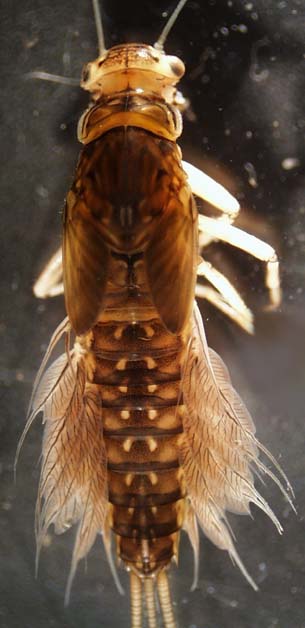
THE XERCES SOCIETY FOR INVERTEBRATE CONSERVATION Aquatic Invertebrates in Pacific Northwest Freshwater Wetlands |
| Identify taxa |
Leptophlebiidae |
|||
|
Prong-gill mayflies can be collected in streams and rivers across the Northwest, but are not often found in the slow moving waters of wetlands. The larvae don't swim well and can be seen undulating through the water in a collection tray. More commonly, they are seen crawling along the bottom, where Paraleptophlebia will often wave their long gills in the water when they sit still. The larvae have distinctive gills that are present on most abdominal segments. The most common types have very long, thin forked gills. Others have wide, oval gills with long, narrow tips, and some (rare in the Northwest) have gills with several narrow fingers off an oval base. The body shape varies and can lead to confusion with a few other families. The most common prong-gills can look a little like the extremely common Baetidae larvae, while others are somewhat flattened and look similar to the flatheaded mayflies (Heptageniidae). |
|
Size: medium to large Identifying feature(s): gills are usually long, thin, and forked Habitat: streams, rivers |
 |
|
© 2007 Xerces Society
Contact info@xerces.org


